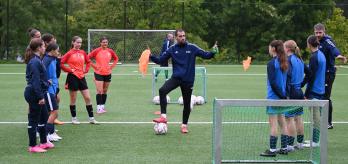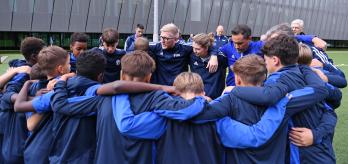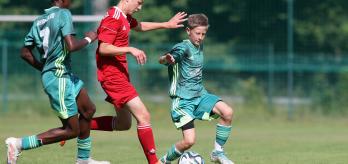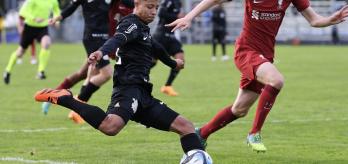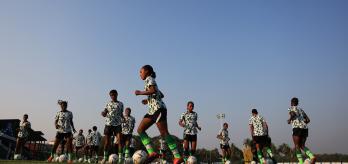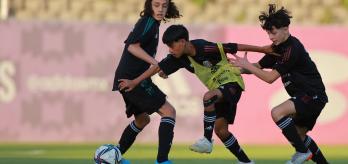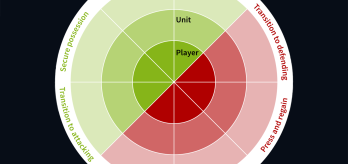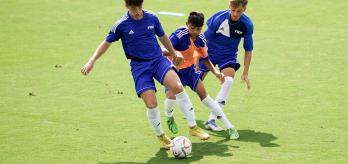From a developmental perspective, all sports (football included) are inherently “neutral” activities. As Professor Jean Côté points out in this Science Explained presentation, whether a child derives developmental benefits from the game depends not just on the skills they learn, but also on how and where they play their football – and all of these factors are influenced by the adults around them. His presentation is followed by a Q&A session, hosted by FIFA’s Dr Paul Bradley.
Identify the three key elements that determine developmental outcomes for young athletes. Explain how these elements work, and how practitioners can manipulate them to make conditions for young players as conducive as possible to holistic development.
There are three key factors that determine outcomes for young athletes: setting, activities, and social dynamics. These factors can be influenced in multiple ways, and it falls to clubs, coaches and practitioners to create the best possible conditions for young players.
Developing young players as people as well as athletes means juggling a range of competing factors, such as the need to balance enjoyment and performance, or short-term and long-term objectives. This is no easy task, but practitioners can draw on an expanding body of research to help them.
Watch presentation
Read summary
Part 1: The three elements that influence the development of young athletes
One factor that determines whether sport produces positive or negative outcomes is how it is organised. To begin the presentation, Professor Côté discusses the three overarching factors that determine those outcomes: the physical and competitive environment (setting), the sporting activity itself (personal engagement) and the way practitioners interact with the participants (social dynamics). Research suggests the way these “levers” interact over time may have a major influence on the level of performance players can achieve, and on their personal development more generally.
Part 2: Developing the “4Cs” and the “3Ps”
The other crucial factor in determining outcomes is time. When players are first introduced to the game, the short-term objective is to engender interest and enjoyment on a day-to-day basis and motivate them to carry on playing. Later, over weeks and months, the focus shifts to building the “4Cs” (competence, confidence, connection and character). Finally, over years of practice, players develop the “3Ps” (performance, participation and personal development), which help them to become not only technically proficient footballers, but also well-rounded human beings.
Part 3: How to use the three key elements for positive outcomes
Practitioners can exert significant influence over the three “levers” in the system, and the choices they make can have positive and negative repercussions for young athletes.In this section, Professor Côté gives some examples of how to combine the three elements to create the best possible conditions for development. Depending on circumstances, the number of potential tweaks to the system might be vast, and proximal factors generally have a greater impact than more distal ones. For instance, changing the size of your pitches has more influence over your overall setting than reorganising your club’s internal structures.
Part 4: Achieving holistic development in youth football
To conclude the session, Professor Côté considers how to find the fine balance required to achieve genuinely holistic development through sport. Getting the balance right can bring huge benefits, but focusing too much on any one area can produce harmful effects. This means coaches, parents and administrators are all responsible for helping to manipulate the three key elements effectively to maintain a healthy balance. Fortunately, they can draw on an expanding library of scientific research to guide them, some of which can be found on the FIFA Training Centre website.
Q&A
01:13
How is this framework different from some of the frameworks that are already informing sporting policy around the world?
04:18
Which “influential elements” would you suggest should be changed first within a sporting organisation in order to generate a positive outcome?
06:30
Are there any conflicting actions that you need to take into account when looking to encourage specific short-term and long-term outcomes in a sporting setting?
08:11
What are the consequences for sports organisations of focusing solely on the long-term performance of their athletes?
11:11
What is the most direct intervention practitioners could implement in order to improve the quality of the social dynamic within a football/sporting setting?
14:25
How should research in the area of athlete development be used to implement programmes for young athletes?
17:15
What importance do you place on play activities for developing young players?
21:07
What is the best age at which to develop attributes like skill and speed, and the psycho-social abilities of young players?
24:02
What are the key take-home messages for practitioners from your presentation?






